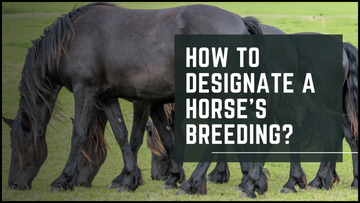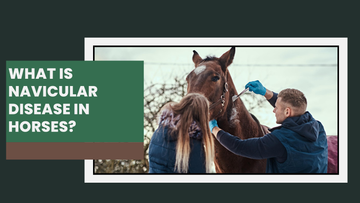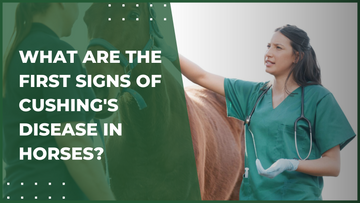Horses are powerful and wise, but without the proper tools, cooperating with them can feel like a test of patience. That's where the horse lead rope saves the day!
But what is the rope to control the horse called, exactly? Don't think of it as a dog leash or a really lengthy shoelace. It's a sturdy equine rope made to guide, train, and keep your horse safe. No matter if you want them to be stable, teach them good manners, or prevent them from wandering off like a curious toddler, this rope gives you the command you need.
So, we'll explore which rope is used for horse handling, which ones work best, and how to avoid common mistakes while using them.
Understanding Horse Control: The Basics of Equine Gear
Holding a horse under control isn’t just about making your life easier, it’s crucial for your safety and your horse's well-being. These majestic animals are strong and sometimes frightened, leading to unpredictable situations. If a horse isn’t appropriately guided, things can get chaotic fast, raising the risk of accidents.
One key tool in roping and riding is horse lead ropes. These ropes aren't just for show; they help your horse to keep it steady. Then there's the horse neck rope, ideal for skilled riders who want more freedom while still maintaining control.
For those looking to combine function with style, the horse-beaded rope halter is a great pick. Its strong and lightweight feature adds a little personality to your horse's look. After all, who says safety gear can’t be stylish?
Handling a horse becomes much easier with the right equipment, making every ride safer and more enjoyable for you and your equine companion.
What is The Rope To Control The Horse Called?
The rope used to handle and control a horse is called a horse rope halter and lead. It attaches to a halter and helps the rider guide, tie, or restrain the horse when required. This equine rope is necessary for safely leading a horse for training, grooming, or daily care.
However, handling a horse requires more than just a rope. Other important equipment includes:
1. Horse Neck Rope:
It’s an uncomplicated loop that goes around your horse's neck, allowing you to guide them with mild pressure while still giving them the liberty to move naturally.
2. Horse Rope Halter:
Made of durable equine rope, it evenly spreads pressure, making communication clear and satisfying for your horse. Great for training and groundwork, it’s a favorite among horse lovers.
3. Horse Rope Headcollar:
A strong yet flexible option to standard leather halters, this is ideal for leading, tying, and keeping control of your horse without being too restrictive. Also, it looks pretty stylish too!
4. Reins for Horses:
They attach to the bridle, allowing you to convey with small movements. Good reins make all the difference, whether you're slowing down, or turning.
5. Bit and Bridle:
The bridle fits on the horse's head, and the bit in their mouth offers you precise control. Different bits apply various pressures, so searching for the right one is key to keeping your horse happy.
6. Saddle and Stirrups:
The ultimate comfort zone! The saddle keeps you safe, while stirrups help with balance and control. A well-fitted saddle makes roping and riding smoother for both you and your horse.
Horse Lead Ropes vs. Horse Reins: Key Differences and Uses
Since horses don't have a “go” or “stop” button, horse ropes do the remaining work for them. But using the wrong one could leave you and your horse staring at each other in confusion!

So, what is the rope to control the horse called? It all depends on the task! If you're leading your horse to the stable, you'll need a horse lead rope. If you're riding, you'll depend on reins for horses. Let’s break down the differences.
Lead Ropes:
1. Essential for handling on the ground:
Lead lines for horses help navigate, connect, and train your horse while keeping them secure. Whether you're leading them to grooming or teaching groundwork exercises, these ropes provide steady control.
2. Strong yet comfortable grip:
A horse lead rope is built to handle a horse’s stability while being comfy enough for your hands. Some come with soft padding, so you don’t end up with sore fingers.
3. Versatile mecate rope :
The mecate rope is a long, braided rope traditionally used in natural horsemanship. It binds to a bosal or hackamore and can double as reins, making it an exceptional multi-purpose tool. Many riders use these for groundwork training before transitioning to mounted riding.
Reins
1. Designed for riding and guiding:
Reins for horses connect directly to the bridle, letting riders communicate with their horse while in the saddle. They are vital for steering, stopping, and maintaining balance.
2. Primary tool for communication
Reins are an elongation of the rider's hands, helping signal turns, stops, and speed adjustments. Accurate rein control is compulsory, as too much pressure can confuse or disturb the horse, while too little may lead to a shortage of responsiveness.
3. Shorter and more responsive :
Their shorter length permits a specific control, enabling riders to give fine signals without excessive movement. Some riders prefer thicker reins for a firmer grip, while others go for thinner, lightweight ones for increased flexibility.
Materials Used in Horse Ropes: Which One is Best?
Picking the right horse ropes is about comfort, durability, and how well you can handle your horse without turning every ride into a tricky battle. But what is the rope to control the horse called?
That definitely depends on its purpose! Some ropes help you lead, while others help with riding, and some give a stylish touch. Let's get into different materials and see which one suits your needs.

1. Cotton Horse Ropes:
If horses had a beloved fabric, then cotton would be at the top of the list! It's soft on their skin, making it a significant option for rope halters for horses. The soft texture provides a secure grip, best for beginners.
2. Leather Horse Ropes:
A leather rope halter is built to last. it’s strong and stylish, and molds fit your horse over time. Many riders love leather for its long-lasting and simple look that never goes out of style.
However, regular cleaning and conditioning are needed to maintain it in full shape.
3. Nylon Horse Ropes:
When it comes to toughness, nylon is a top choice! It withstands stretching, shrinking, and bad weather. It’s excellent for riders who need durable horse ropes that can manage everyday use.
4. Beaded Horse Ropes:
A horse-beaded rope halter brings both function and fashion to your horse’s gear.
These halters deliver good control while adding a decorative touch.
Common Mistakes When Using a Horse Rope and How to Avoid Them
Searching for the proper horse ropes is a key to keeping your horse under control and safe as well. However, small errors with rope halters for horses or reins for horses can immediately turn a calm moment into a tricky situation. Here are some of the mistakes you should not overlook!
1. Using the incorrect Rope:
A horse neck rope is great for advanced riders who want a more natural feel, but if you’re leading your horse, you need rope halters for horses with the best horse rope for better control.
2. Holding the Rope Too Tight or Too Loose
A strong grip on the rope makes your horse nervous, while a loose hold gives them too much freedom.
3. Tying Knots That Are Too Tight or Too Weak:
A weak knot can come undone, and an overly tight knot can be impossible to undo in an emergency. Learn proper tying techniques for rope halters for horses, providing they’re secure but easy to release.
4. Using Old or Damaged Ropes:
Weak or damaged equine rope can snap at the worst moment, placing you and your horse at risk. Daily monitor your horse ropes and replace them when required.
Where To Buy The Best Rope for Your Equine?
A good horse rope isn’t just a tool, it’s the key to smooth handling and better communication with your horse. At The Epic Animal, we know that the right gear makes all the difference!
That’s why we offer premium horse lead ropes, sturdy rope halters for horses, and durable horse rope halters built to last. With 30+ years of experience in the equine industry, we help retailers stock the best tack for customers.
Shop now and give your horse the best!
FAQs:
-
How to tie rope halters for horses?
To tie rope halters for horses, create a perfect knot that won’t slip but is easy to untie.
-
How long is a horse lead rope?
A standard horse lead rope is usually 8 to 10 feet long, providing enough length for control while leading or tying. Longer options are known for groundwork and training.
-
How to put a chain lead rope on a horse?
Attach the chain end of the horse rope to the halter, weaving it through the side rings and clipping it under the chin or over the nose for extra control when leading.
-
How to tie a lead rope for a horse?
To tie a lead rope for a horse, use a quick-release knot, securing the equine rope stays secure but can be undone easily in case of trouble.
-
What are the ropes on a horse called?
The ropes used for handling horses include horse neck rope, horse lead rope, reins for horses, and rope halters for horses, each serving different purposes for leading or riding.






